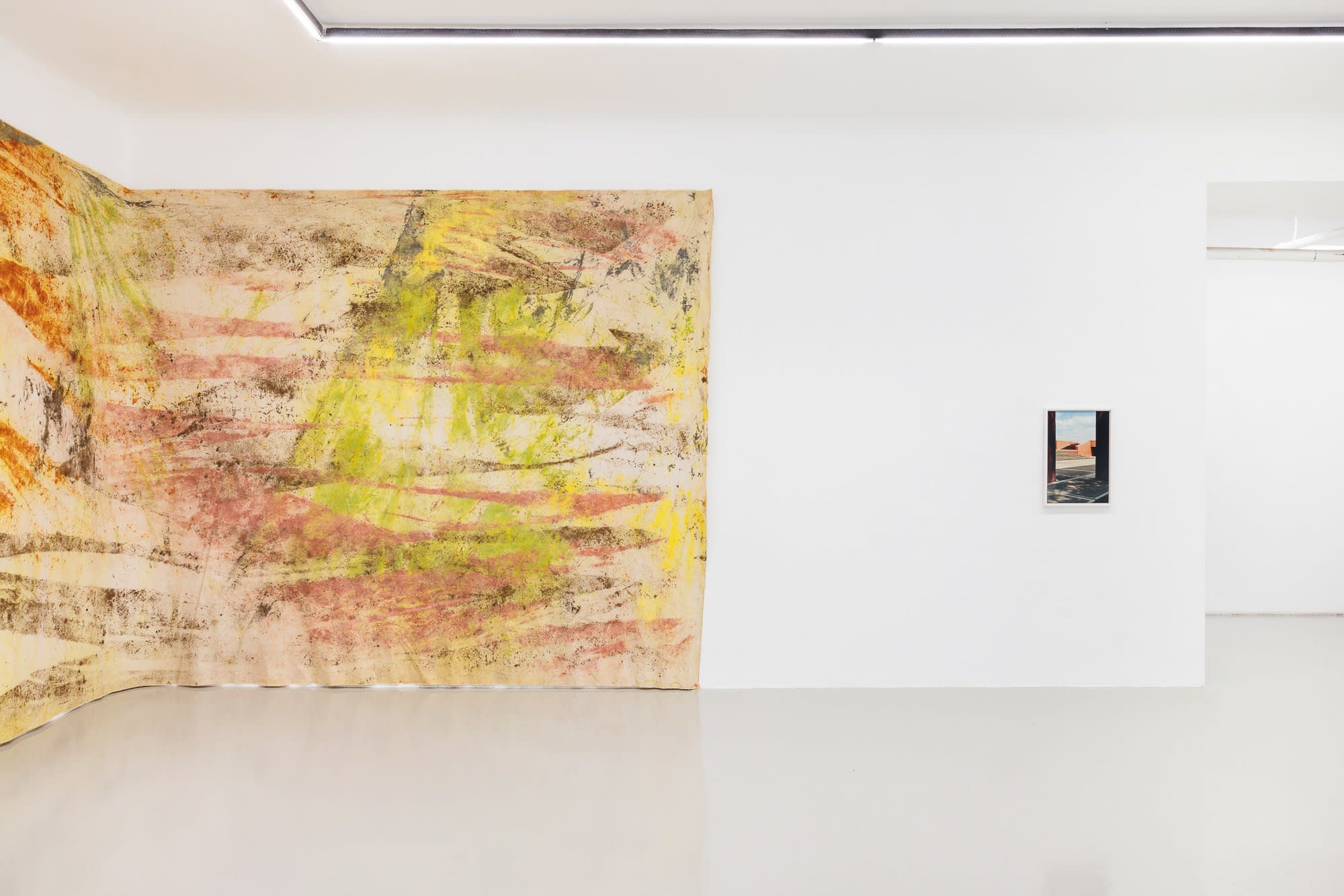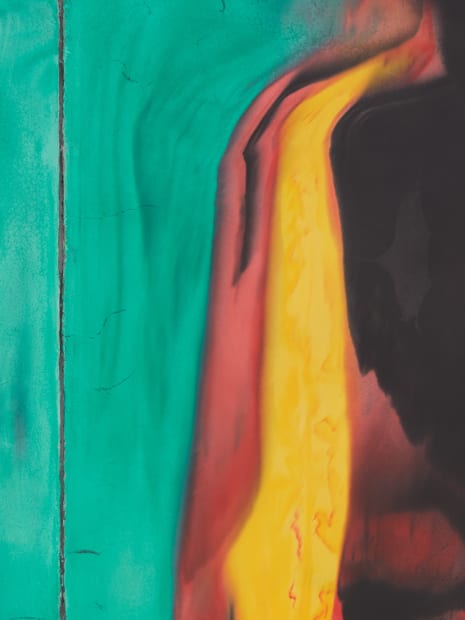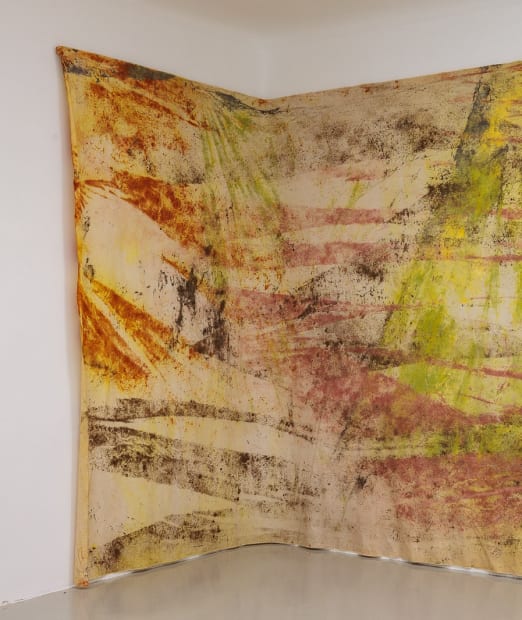-
GLOSSARY - curated by Sacha Craddock
Featuring Tereza Červeňová, Harminder Judge, Andreas Reiter Raabe & Jessica Warboys -
Galerie Kandlhofer invited Sacha Craddock to curate an exhibition for this year’s edition of Curated By. The exhibition will show works by Tereza Červeňová, Harminder Judge, Andreas Reiter Raabe and Jessica Warboys.
It is impossible to be neutral in politics and yet neutrality, the theme of this years Curated by, could be seen as a welcome space in which to embrace the non-functional nature of art. It is hoped that such a metaphorically extended space and time dilutes any simplistic idea of understanding, that the narrative of artistic intention does not trump experience to determine how things really are or will be. A show consisting of work by four artists, will inevitably, carry a three-dimensional sense of discovery and surprise about it. No description can encapsulate the complicated, perhaps contradictory, power of experience. While neutrality can never, in its abstraction, provide real vision or result, the range of physical language used by the four selected artists is able to provide a sweep of desire and aesthetics, a true range of physical endeavour and reference, that will unwittingly absorb the neutral in some other way. Much of work by the selected artists arrives out of a metaphorical sideways shift, out of a use of material that reflects the beginning of possibility and the fact that at some sort of level we, as audience and artist alike, begin in the same place. -
 Andreas Reiter Raabeo.T. , 2018/2022, Acrylic, Synthetic Resin, Epoxy, Mixed Media on Cardboard Tubes,90 x 45 x 198 cm
Andreas Reiter Raabeo.T. , 2018/2022, Acrylic, Synthetic Resin, Epoxy, Mixed Media on Cardboard Tubes,90 x 45 x 198 cm -
 Harminder JudgeUntitled (orchid, chest), 2023, plaster, polymer, pigment, scrim, oil , 200 x 203 x 4 cm((JUDG23005))
Harminder JudgeUntitled (orchid, chest), 2023, plaster, polymer, pigment, scrim, oil , 200 x 203 x 4 cm((JUDG23005)) -
 Tereza ČerveňováCathedral de San Pedro, 2023, analogue chromogenic print on Fuji Matt paper,100 x 80 cm, 39 3/8 x 31 1/2 in, Edition 2/5 plus 2 AP
Tereza ČerveňováCathedral de San Pedro, 2023, analogue chromogenic print on Fuji Matt paper,100 x 80 cm, 39 3/8 x 31 1/2 in, Edition 2/5 plus 2 AP -
 Jessica WarboysSea Painting Dunwich , 2020, Pigment, canvas, 558 x 325 cm
Jessica WarboysSea Painting Dunwich , 2020, Pigment, canvas, 558 x 325 cm
GLOSSARY: curated by Sacha Craddock
Past viewing_room









